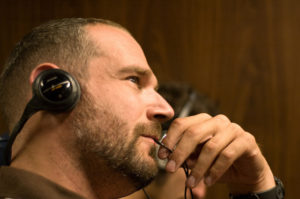As both a musician and writer, I would like to explain why I celebrate the power music holds over our emotions. In particular, music is capable of producing two very different effects that are important to understand and appreciate: healing and hurting. Music accomplishes countless other purposes, but the way music elicits both positive and negative emotions is an important part of its magic.

A welcome distraction
How music heals is pretty straightforward. One common scenario—for both performer and listener—is to escape in music when times get tough. Immersion in music can allow a person’s mind to clear itself, to provide a period of distraction. Personally, I find comfort in listening to perhaps a Chopin Ballade or something like Lyapunov’s Variations Op. 49. The listener can take a few moments to wallow in the sorrow (or really any extreme emotion), and the catharsis provided by this process results in great relief.
Even aside from emotional and intangible healing, there is research and evidence into using music therapy to aid in the healing of certain diseases like Alzheimer’s and Parkinson’s. I was surprised to find out both the quality and the quantity of benefits of music therapy, as listed in this article by the Harvard Women’s Health Watch.
Sharing painful feelings
The hurting aspect is also rather straightforward from a listener’s point of view. Sometimes, a harmony catches us off guard, and the dissonance jars us just enough to evoke an emotional response. This effect ties into the emotional healing ability of music, with the “painful” moments catalyzing a cleansing of emotion (catharsis). Throughout a musical piece, emotional moments of pain may alternate with moments of relief. The ultimate effect is a general calming of strong emotions, a leveling of feeling. In technical terms, this is similar to a negative feedback loop for emotion, in which there is a cycle that brings any stretch of emotion back to an intermediate state of enjoyment and relief.
Images that paint a picture
Performers can also convey feeling in their music by working with images of hurt and pain. Several months ago, my teacher, Mack McCray, told me to play a certain section of a piece as if I am in pain. He referenced the original story of The Little Mermaid, in which the mermaid transforms into a human (with aid of the witch), and one of the conditions for this transformation is that every step taken will feel as if stepping on sharp glass or knives. He told me to feel like the mermaid at this time, or at least keep this in mind while I practice. This lesson inspired me to consciously consider how important it is that music sometimes hurts from the perspective of the performer.
Of course, healing and hurting are specific effects that do not encompass all of music, as it is far too dynamic (pun intended) to be categorized or generalized in just this way. I write this because I think the significance of healing and hurting is underappreciated and underestimated. It’s important for us to take times to sit back and contemplate what music is, what it does, and how it does so, if just to better appreciate this significant part of our lives.